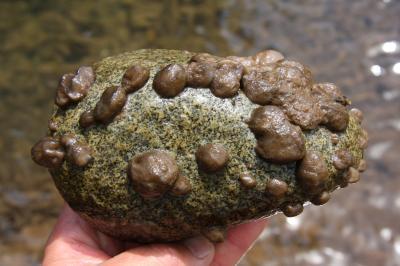"Correctly identifying an invasive species as either native or nonnative is important for developing sound policy, management and scientific research programs because effective responses depend on knowing whether the species' dominance is caused by ecological or evolutionary novelty, changes in environmental conditions that facilitate it, or both," said Professor Brad Taylor, the study's lead author.
Didymo blooms were hastily attributed to human introductions or the emergence of new genetic strain because the absence of evidence was used as evidence of absence in many locations. "Even in locations where rock snot had been recorded a century ago, this information was either ignored or the idea of a new genetic strain was adopted," Taylor says.

The recent appearance of the freshwater algae known as "rock snot" on river bottoms worldwide is caused by a native species responding to changing environmental conditions rather than by accidental introductions by fishermen or the emergence of a new genetic strain as widely believed, a Dartmouth College-led study suggests.
(Photo Credit: Brad Taylor)
Algal blooms are often caused by excessive phosphorus and other nutrient inputs, but didymo blooms occur because phosphorus is low. Rock snot lives on river bottoms and obtains nutrients from the water above. When nutrients are rare, the algae produce long stalks that extend the cell into the water above to access nutrients. The result of this stalk growth is thick mats covering the river bottom. "The paradox of didymo blooms in low-nutrient rivers is not really a paradox at all. However, the idea that low phosphorus can cause an algal bloom is hard for people to accept because we are all taught that more nutrients equal more algae," Taylor says. The study explains that other algae and bacteria respond similarly to low nutrients, but rock snot blooms are unprecedented, making this organism a good sentinel of what could be the new norm in many pristine rivers worldwide.
The new research suggests rock snot blooms have become more common because of climate change and other human-caused environmental changes that are decreasing phosphorus to levels that promote the formation of didymo blooms in many remote, otherwise pristine rivers worldwide.

The native freshwater algae known as "rock snot" grows on river bottoms worldwide.
(Photo Credit: Brad Taylor)

This is the freshwater algae known as "rock snot" or "didymo."
(Photo Credit: Brad Taylor)
Source: Dartmouth College